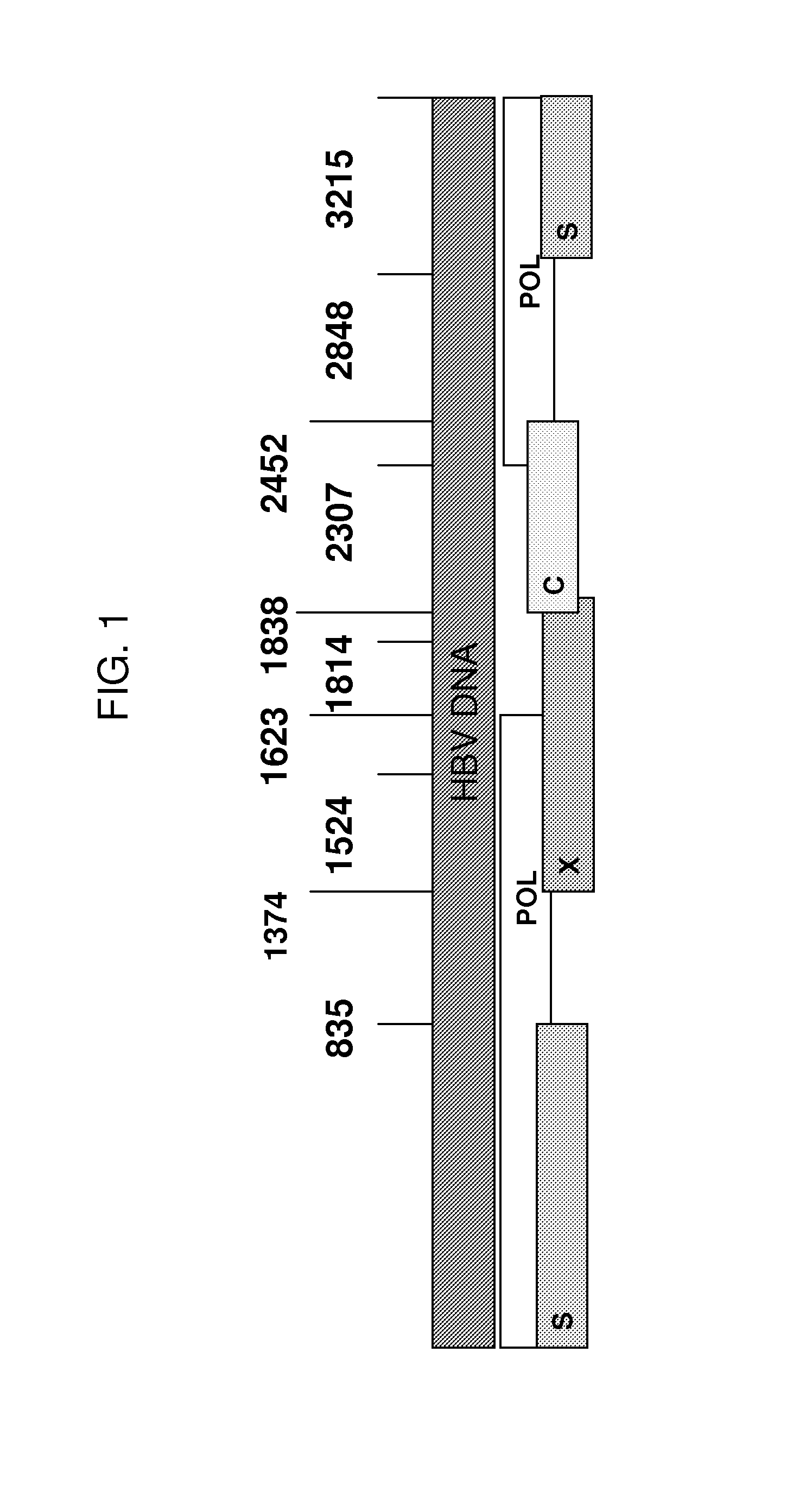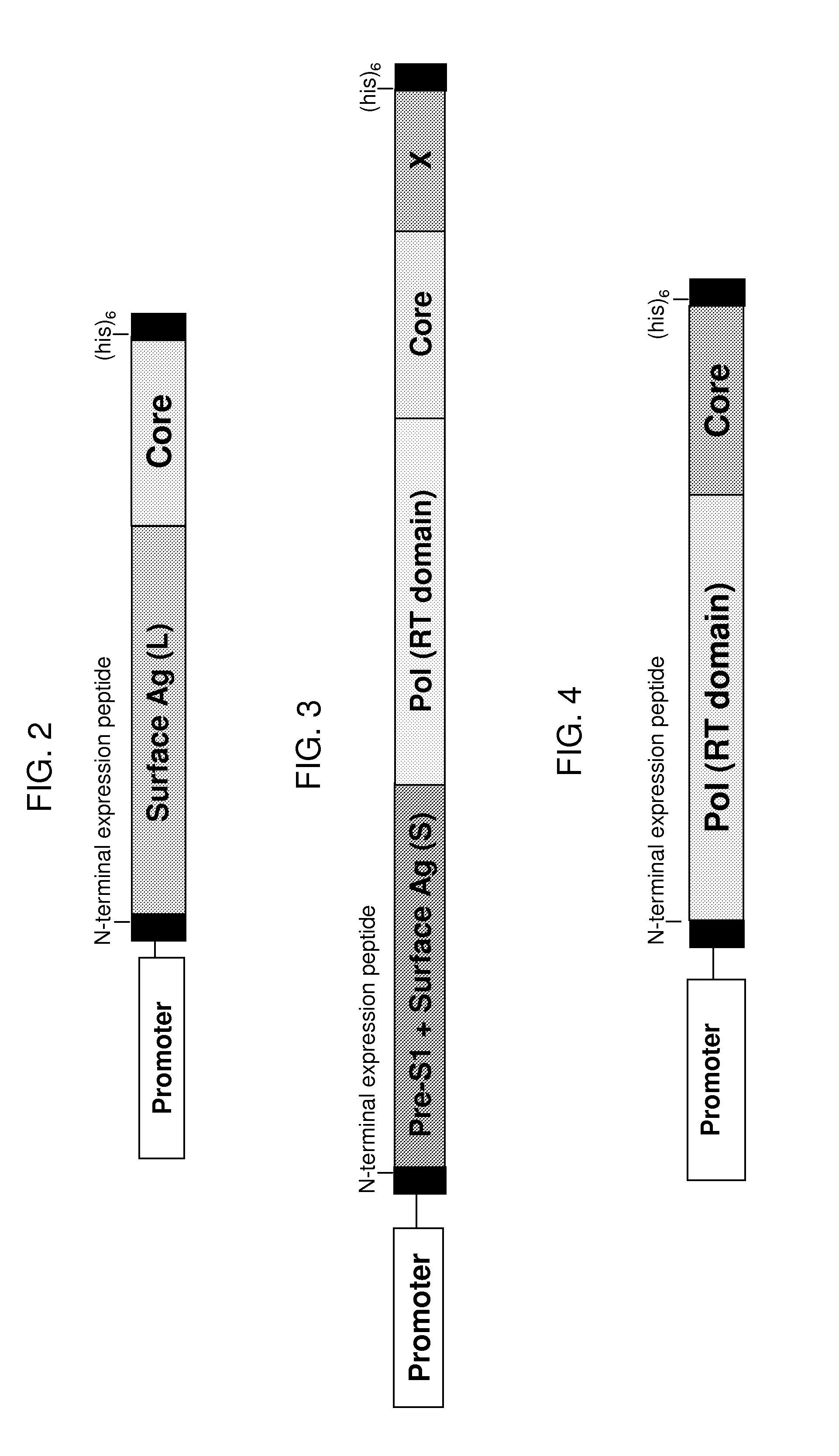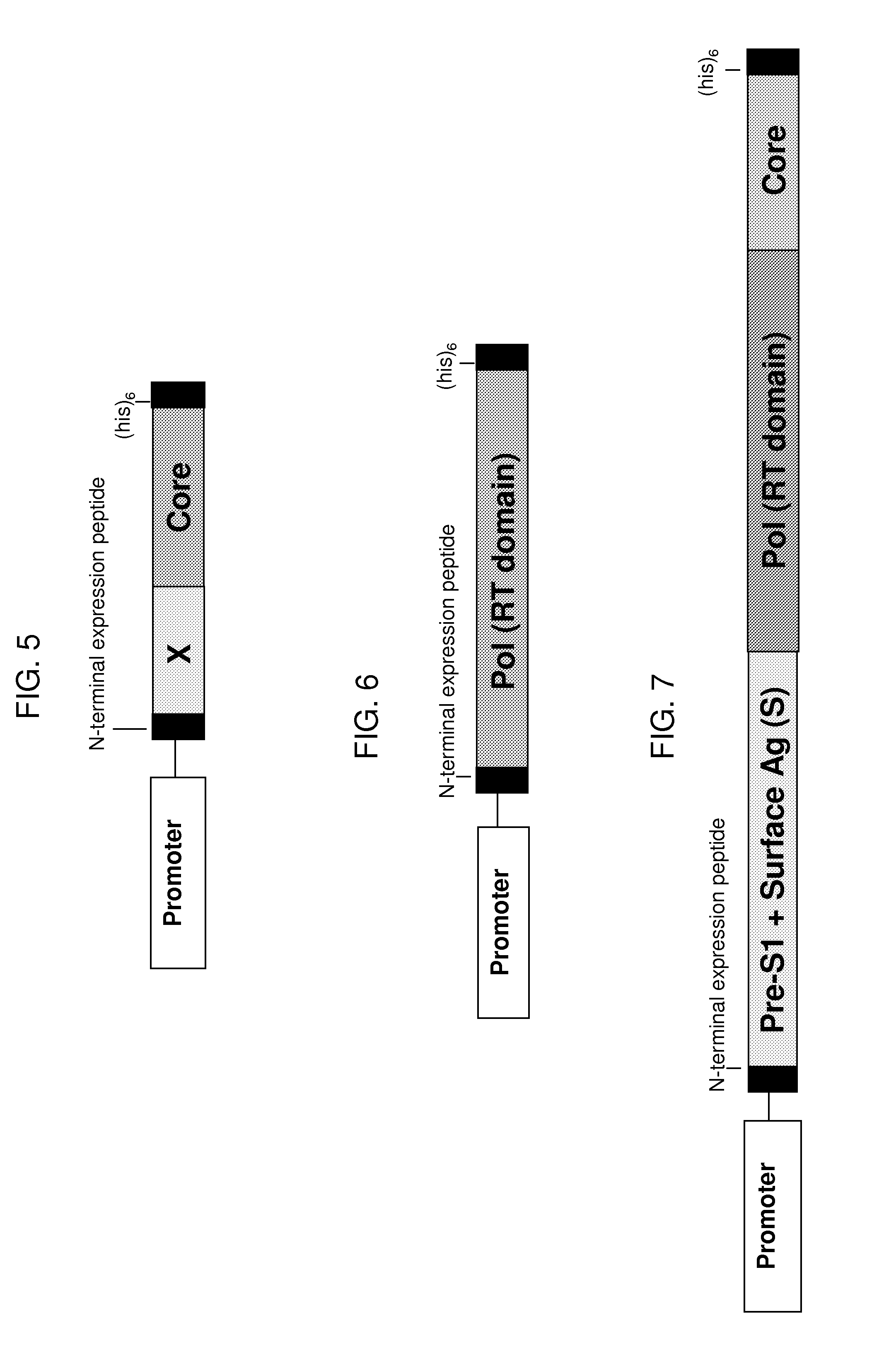Yeast-based therapeutic for chronic hepatitis b infection
a hepatitis b infection and yeast-based technology, applied in the field of immunotherapeutic compositions and methods, can solve the problems of inability to complete the “cure” or eradication of the virus, toxic interferon-based approaches, and low seroconversion rate, so as to improve the rate of serum hbsag loss, improve the seroconversion rate, and reduce the effect of serum hbsag
- Summary
- Abstract
- Description
- Claims
- Application Information
AI Technical Summary
Benefits of technology
Problems solved by technology
Method used
Image
Examples
example 1
[0364]The following example describes the production of a yeast-based immunotherapeutic composition for the treatment or prevention of hepatitis B virus (HBV) infection.
[0365]In this experiment, yeast (e.g., Saccharomyces cerevisiae) were engineered to express various HBV surface-core fusion proteins, each having the basic structure shown in FIG. 2, under the control of the copper-inducible promoter, CUP1, or the TEF2 promoter. In each case, the HBV fusion protein was a single polypeptide of approximately 595 amino acids, with the following sequence elements fused in frame from N- to C-terminus, represented by SEQ ID NO:34 (1) an N-terminal peptide to impart resistance to proteasomal degradation and stabilize expression (positions 1 to 6 of SEQ ID NO:34); 2) a two amino acid spacer (Thr-Ser) to introduce a SpeI restriction enzyme site; 3) the amino acid sequence of a near full-length (minus position 1) HBV genotype C large (L) surface antigen (e.g., positions 9 to 407 of SEQ ID NO:3...
example 2
[0369]The following example describes the production of another yeast-based immunotherapeutic composition for the treatment or prevention of hepatitis B virus (HBV) infection.
[0370]Yeast (e.g., Saccharomyces cerevisiae) were engineered to express various HBV fusion proteins, each having the structure schematically shown in FIG. 3, under the control of the copper-inducible promoter, CUP1, or the TEF2 promoter. In each case, the fusion protein was a single polypeptide of approximately 945 amino acids, with the following sequence elements fused in frame from N- to C-terminus, represented by SEQ ID NO:36: (1) an N-terminal peptide to impart resistance to proteasomal degradation and stabilize expression (positions 1 to 5 of SEQ ID NO:36); 2) the amino acid sequence of an HBV genotype C hepatocyte receptor domain of the pre-S1 portion of HBV large (L) surface protein (unique to L) (e.g., positions 21-47 of SEQ ID NO:11 or positions 6 to 32 of SEQ ID NO:36); 3) the amino acid sequence of a...
example 3
[0379]The following example describes the production of additional yeast-based immunotherapeutic composition for the treatment or prevention of hepatitis B virus (HBV) infection.
[0380]In this experiment, yeast (e.g., Saccharomyces cerevisiae) are engineered to express various HBV polymerase-core fusion proteins, as shown schematically in FIG. 4, under the control of the copper-inducible promoter, CUP1, or the TEF2 promoter. In each case, the fusion protein is a single polypeptide of approximately 527 amino acids, with the following sequence elements fused in frame from N- to C-terminus, represented by SEQ ID NO:38: (1) an N-terminal peptide to impart resistance to proteasomal degradation and stabilize expression (SEQ ID NO:37; positions 1 to 6 of SEQ ID NO:38); 2) the amino acid sequence of a portion of the HBV genotype C polymerase including the reverse transcriptase domain (e.g., positions 347 to 691 of SEQ ID NO:10 or positions 7 to 351 of SEQ ID NO:38); 3) an HBV genotype C core...
PUM
| Property | Measurement | Unit |
|---|---|---|
| nucleic acid | aaaaa | aaaaa |
| composition | aaaaa | aaaaa |
Abstract
Description
Claims
Application Information
 Login to View More
Login to View More - R&D
- Intellectual Property
- Life Sciences
- Materials
- Tech Scout
- Unparalleled Data Quality
- Higher Quality Content
- 60% Fewer Hallucinations
Browse by: Latest US Patents, China's latest patents, Technical Efficacy Thesaurus, Application Domain, Technology Topic, Popular Technical Reports.
© 2025 PatSnap. All rights reserved.Legal|Privacy policy|Modern Slavery Act Transparency Statement|Sitemap|About US| Contact US: help@patsnap.com



